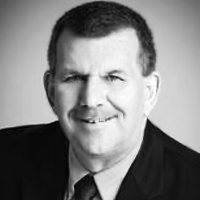Interview with Tom Powers, Ph.D., Vice President Audiology and Professional Relations, Siemens Hearing Instruments
Paul Dybala: Hi everybody, this is Dr. Paul Dybala with AudiologyOnline. I am at AudiologyNOW! 2008 with Dr. Tom Powers from Siemens Hearing Instruments. Siemens is promoting four very innovative new products that we will discuss today. Tom, thank you for meeting with me;I think we should start by talking about Vibe, your very unique new hearing aid. Could you describe the form factor of this innovative hearing aid design?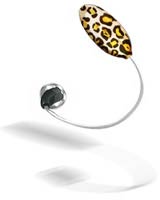
Siemens Vibe
Tom Powers: Thank you. It's always great to be with you and the folks at AudiologyOnline.
Vibe is what we call a new "form factor." That's a term we use to define this and other products coming in the future. When designing Vibe, we wanted something that fundamentally changed the way hearing aids look, and we wanted to change the design of hearing aids, how they fit in the ear.
We took some of the receiver-in-canal technology and tried to move some of the electronics back into the bowl or other areas of the ear. As it evolved, it became clear that there was an area that was maybe underutilized in the crest or cymba/helix area. We therefore moved the electronics into a small, bean-like device and combined that with a receiver-in-canal technology to result in Vibe.
Dybala: How many different styles or shells does Vibe have?
Powers: There are 19 different covers, and the user has the capability, with a small handling tool, to grab the top case and pull it off. Users can then take one of the five colors that come in their basic kit and replace that top cover. We now offer models in red, yellow, green, leopard print, etc. If they want even more options, their audiologist can certainly provide any of the 19 options that come in the professional kit. Users can really choose their own Vibe, which gets right back to the name we gave it.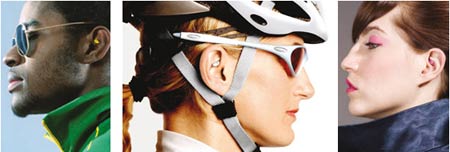
Siemens Vibe
It is really an interesting product, and it does not look like a hearing aid. One of our representatives coming over from Germany was actually sitting in the airport in Frankfurt, and somebody walked up and said, "Who are you here with?" He said, "I am here by myself." They said, "No, there must be some celebrity because I see your ear piece;you must be on security detail with some celebrity." The person did not see Vibe as a hearing aid, which we think is a good thing, and that was part of the philosophy: to make it really different as well as something that people might not see as a hearing aid.
Dybala: Absolutely. What style are you calling it? Is there a new acronym?
Powers: We have tried, but it is a bit different. We are currently referring to it as in-the-crest, but unfortunately that comes out as "ITC," which would be confused with an existing product elsewhere. I think we may just keep calling it Vibe because it's unique in and of itself. We'll keep working on the acronym;we know we need those particularly in our field.
Dybala: Very true. Now, this is a sensitive part of the ear. Describe what Siemens has developed to make sure that it would fit comfortably and properly in the person's ear.
Powers: We did an extensive field test with a few thousand folks, and about 80% of them are able to wear it without any difficulty. They can get it in their ear and wear it quite comfortably. These people tend to be those folks who have a little bit larger anatomy up in the crest and cymba area.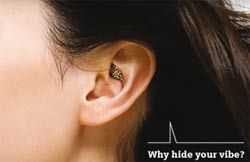
We've actually developed a few tools so you can take a look at that area of the ear, both from a size perspective and to analyze the flexibility of the cartilage to see whether or not those other 20% might need a wearing schedule to acclimatize that area of the ear.
There are about 5% or so of people who simply aren't going to be able to wear it because their ears are either too sensitive or too small. Of the candidate pool, the device can fit up to about a moderate loss, because it is still an open fit RIC-type product.
Dybala: Excellent. Now, tell us about your new devices with wireless connectivity, Pure and Tek.
Powers: Pure, which is our latest technology, is available in both a micro-RIC product and a CIC. This is somewhat of a departure from what we previously made, because typically products are released in all shell types. This is really by design, because Pure is designed for people who are really interested in either wireless connectivity and/or the discreet appearance, which is typically the CIC user. It goes back to the philosophy we have at Siemens: stop focusing on the ears and start focusing on the people they're attached to.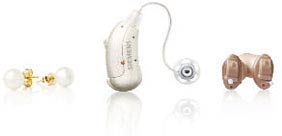
Siemens Pure RIC and CIC
Pure is a very high-tech product. It's high-end signal processing and advanced connectivity. We accomplish this through our Tek Connect and our whole Tek system. Pure 500 and 700 products are capable of having Tek. Tek is an optional wireless accessory that allows users to connect to their TV, Bluetooth headphone, MP3 player, or any other audio source they'd like. For the television, sounds are transmitted from a small transmitter that's connected from the TV to Tek Connect which then uses a magnetic transmission to stream to the hearing aids.
It's pretty easy;you can be listening to your TV and then someone calls you on the phone. With one push of the button on your Tek Connect, it's "Hi, how are you? Sure, I'll meet you for coffee in the morning," and then it's right back to your movie. It's a very seamless system for people, and we think it's going to be another aspect that will help people to think about them not as hearing aids, but more as communication devices. It's important to think about communication as opposed to a device.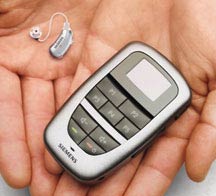
Siemens Tek
Dybala: Absolutely. Tek reminds me of a Blackberry device with large buttons, which will be easy to use. Another advantage is the proprietary Bluetooth that Siemens has developed. Tell us a little bit about what that is and why that's important.
Powers: The traditional or standard Bluetooth transmission, especially if you are using it to watch TV, has a slight delay. This could cause a serious problem when watching TV and trying to read lips. It would be like you're watching a movie that's out of sync or with subtitles. It would be very confusing, even for people with normal hearing, but certainly for the hearing-impaired who are trying to lip read the news.
We created an enhanced proprietary version of the Bluetooth transmission that cuts that delay time to less than 50 milliseconds. The result is that it's really imperceptible to someone who might be watching the news through these devices. For cell phones and MP3s, there is no face;therefore, it's not as critical. But for watching television, however, it's a really important thing and we felt it was important enough to enhance that Bluetooth and develop the algorithm for it.
Dybala: Excellent. Now, tell us about Explorer. This hearing aid was engineered from the ground up for children, correct?
Powers: Yes. Explorer was designed for children, ranging from smaller kids to teens, and we have a variety of features in that product to accommodate each of these age groups. We actually sat down with several of the leading pediatric audiologists and began collecting ideas about what they thought was important. What evolved was a device that has a lot of features, including a small LED.
The LED light allows teachers, caregivers, parents, etc. to know that the device is on and working. It's probably not as critical with a smaller child who hasn't yet learned how to turn the hearing aid off, but when they get to that age where they can turn it off, it becomes much more important. There's also a volume control with numbers on it, which makes it easy for the professional to set it. The VC also has an off position, and it can be disabled altogether in the software if so desired. There are also several great signal processing features in Explorer.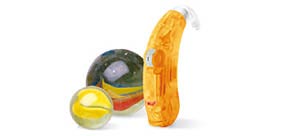
Siemens Explorer
The other feature that we developed in conjunction with Explorer was a complete workflow within our Connexx software for fitting in a pediatric environment. Starting off with RECDs and going through the formula, the entire workflow was designed under the guidance and advice of pediatric audiologists, which is a little different than fitting it for an adult.
We are also really excited about our relationship with Disney. Siemens Hearing Instruments, Inc. and Disney have been working on a joint pediatric hearing loss awareness campaign which will launch in the United States within the next several months.
As part of this campaign, Siemens and Disney have collaborated on a number of projects to educate children and their families about hearing loss. This comprehensive pediatric hearing initiative features a custom Siemens and Disney program graphic, an educational website at www.hearitforthefirsttime.org, a unique Siemens pediatric kit for distribution to consumers and an original Disney storybook called "Three Cheers for Bunny's Ears!" that features the Mickey Mouse Clubhouse characters alongside Bunny, a new character who has hearing loss.
This collaboration not only leads to innovative entertainment at Disney theme parks, it is also helping to educate families about pediatric hearing loss. By incorporating the friendly Disney characters that we all know and love in the Siemens' pediatric hearing loss awareness campaign, the transition to hearing aids will be that much more enjoyable for our pediatric patients and parents.
Dybala: That's excellent. Tom, thanks again for taking time to meet with me today. If anyone needs additional information, they can find it on the Siemens website at www.siemens-hearing.com or they can also visit the Siemens Web Channel here at AudiologyOnline, www.audiologyonline.com/channels/siemens.asp.
I am sure our viewers can look forward to new and exciting products and interviews from Siemens in the future.
Powers: Absolutely, always great to be with you. Thanks again.
More About the Siemens-Disney Alliance
Siemens Corporation and Disney announced a 12-year strategic alliance in October of 2005. As part of this alliance, Siemens sponsors several attractions and shows at Disney's US parks and resorts as well as the ABC video board at Times Square in New York.
For more information about the Siemens - Disney Alliance Contact:
Elizabeth Cho
Public Relations Director
elizabeth.cho@siemens.com
tel:(212) 258-4589
fax:(212) 258-4943


